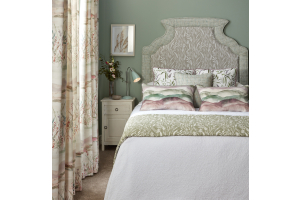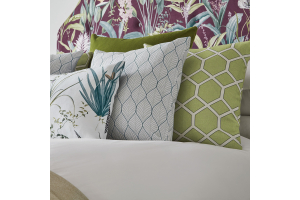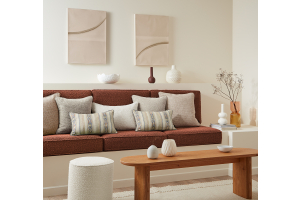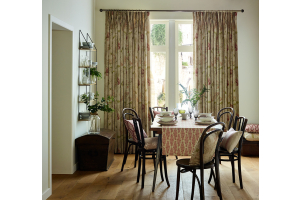The psychology of colour
Choosing the colour scheme for your room can be one of the most difficult interior design decisions you’ll make, but it can also be the most powerful. Research shows that when our eyes connect with a colour, our brains release chemicals which impact us on a physical and emotional level, meaning colour can influence mood and shape a room’s personality.
When decorating a room, equip yourself with an understanding of each colour’s psychological value and use it to your advantage. To help, here are a few of the most popular colours used to decorate and how they can be used to evoke feeling.
Red
Red raises a room’s energy level and is associated with excitement and power. It has been shown to speed up heart-rate and promote alertness, so is a good choice for rooms where you need to be most active. Red also encourages conversation and is often used in rooms used for socialising, such as the living room or dining room. Be careful though; red is an appetite stimulant, which is why you’ll often find it used in restaurants. It’s also one of the strongest hues and usually the first colour our eyes are drawn to, so a little can go a long way. Too much red may encourage feelings of anger or may be over-stimulating.
Blue
Blue has the opposite effect and is said to slow heart rate and lower blood pressure. It is calming and peaceful, often recommended for bathrooms and bedrooms – it’s even believed that blue helps tackle insomnia and can encourage a deep, relaxing sleep. Other studies show that it promotes imagination, making it good choice for a child’s bedroom. Blue is one of the most popular colours used in interior design, but be careful with the shades you choose. Heavy use of dark blue evokes feelings of sadness, and very light blues can look stark and cold if not balanced against other shades. Opt for warm or bright blues to create a relaxing, serene environment.
Yellow
Yellow is the colour of joy, known to communicate optimism and happiness because of its energising and uplifting qualities. It also activates memory, stimulates the nervous system and promotes communication. It’s welcoming so is popular in hallways, and the use of a pale yellow is a good trick to make a small space look bigger. A muted yellow is pure and soothing, while brighter yellows are summery and warm. The wide spectrum of yellow shades give you flexibility to control the mood but whatever your preferred shade, yellows are a great way to create a feel-good ambience in the home.
Green
Green is a nurturing colour, good for helping people adjust to new environments and situations. Green’s combination of the calming tones of blue and the cheerfulness of yellow makes it suited for most rooms in the house – it’s warm enough to promote comfort, but cool enough to be relaxing. Green is believed to relieve stress and invoke feelings of refreshment, healing and peace. Because of its restful qualities, a green scheme does run the risk of promoting lethargy but overall green is one of the most positive colours you can use in your home.
The best of the rest…
Purple is dramatic, sophisticated and often associated with luxury. It also promotes creativity and artistic flair.
Orange is warm and inviting and is said to encourage extroverted behaviour, making it a good choice for social spaces.
Neutrals are calming and promote well-being. Although often used to accent rather than being schemes in their own right, neutrals are flexible and can be easily livened up with pops of colour.
For more information how you can be inspired by iLiv call 01772 651 199, locate our stockists here or download our online brochure now.
You can also keep up-to-date with the latest trends by following us on Twitter and Facebook.








